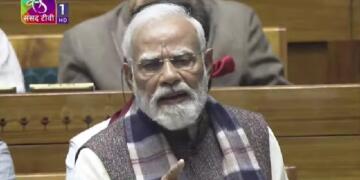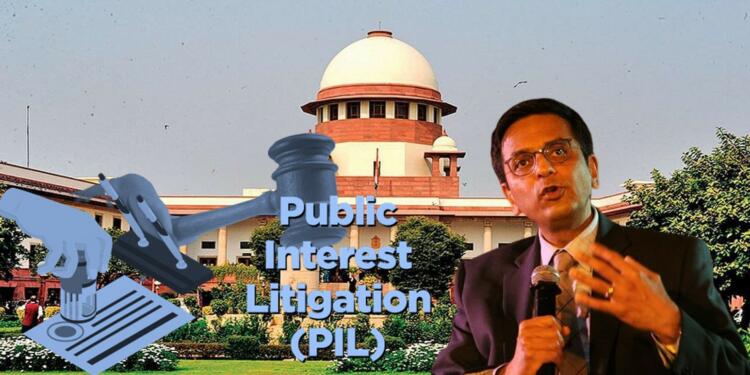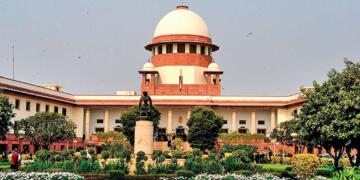The outrageous bravado of the two great legal luminaries, Justice V R Krishna Iyer and Justice P N Bhagwati pioneered judicial activism in India. The unparalleled vision, philosophical rationale and futuristic imprint of the two great judges is credited to provide us with the mechanism of Public Interest Litigations (PILs). However, soon the beacon of hope transformed into a tool of propaganda.
CJI shudder the Enviro-Extortion lobby by its thorn
The Chief Justice of India (CJI) DY Chandrachud has lambasted the lobby which under the guise of ‘public-spirit’ and ‘social action group’ waste the time of the courts, by flooding it with petitions in the name of public interest. The CJI exposed the hypocrisy of the cabal that tries to stalemate development and misguides the court and the citizens to carry out their vested interests.
The CJI has also reprimanded the advocate fraternity and asked to bring only those cases to the court of law that falls within the parameters of the law and the Constitution. The CJI advised not to make a mockery of Public Interest Litigations (PILs) mechanism.
Topical observations of CJI on abuse of PIL
CJI D.Y. Chandrachud is considered to be one of the most liberal judges of the contemporary bench. His recent stance of admonishing acts of judicial activism points out that the judiciary was being taken for a ride in the near past using PILs as an instrument.
Evidently, while dealing with a petition for declaring Netaji Subash Chandra Bose’s birthday a national holiday, the CJI observed that the Supreme Court’s authority should be regarded seriously. According to the CJI, not everything that sounds desirable may be included into the legal system. The CJI further, iterated that before filing PILs, the attorneys should determine if the court has the authority to issue directions on the matter or not.
Read more: The spineless “Juvenile Justice Act” needs an immediate upgrade
Further, in another matter pertaining to Sarthi Seva Sangh, a bench comprising CJI DY Chandrachud and Justice PS Narasimha highlighted that the mechanism of PILs were turning into an instrument of blackmail and to halt infrastructural and building projects from vested interest groups.
While underlining the problem with the abuse of PILs, the CJI stated the locus of most cases against public infrastructure are insufficient in the opinion of the court as it deals with policy matters of governance. The CJI was of the view that PILs are increasingly being used as a kind of extortion when it comes to building or infrastructure projects.
Further, highlighting the nexus of vested interest groups, the Bench explains that a wealthy real estate developer could comfortably leverage the entire PIL project to divert such projects. That is to say, under the garb of environmental protection, the institutions of the government and public policy cannot be subjected to extortion. Perversely the purpose and the forward looking vision of Justice Iyer and Justice Bhagwati seem to have been lost.
Erudite Conceptualization of PILs in India
The magnificent vision in PILs dates back to the post-emergency era, whereby the Supreme Court was embarked upon to address the issue of the requirements of locus-standi and of aggrieved parties, as the victims often found it difficult to approach the court.
Consequently, Justice P N Bhagwati and Justice V R Krishna Iyer came up with the idea of PILs to address the miseries of the citizens. The marvelous vision of the two judges was crucial in facilitating the legal revolution of the eighties.
Read more: 2022, Jacob Puliyel vs. Union of India: Supreme Court dictum on mandatory Covid vaccination
The first PIL case, exploring the possibility of providing access to justice to the poor and the exploited people, dates back to 1979. In Hussainara Khatoon v. State of Bihar, a PIL was first entertained to address the voice of the vulnerable.
However, the case that ushered in a new era for the PIL movement was that of S.P. Gupta v. Union of India whereby, any member of the public or social action organization acting in good faith was allowed to approach the High Courts or the Supreme Court by invoking Writ Jurisdiction.
The judgment proved to be a cost effective and major breakthrough as it provided a redressal mechanism against the violation of legal or constitutional rights. Contrarily, the essence of PILs lost to the hands of cabal that misused it.
Support TFI:
Support us to strengthen the ‘Right’ ideology of cultural nationalism by purchasing the best quality garments from TFI-STORE.COM
Also Watch:
https://www.youtube.com/watch?v=sjw68IrUvzc






























